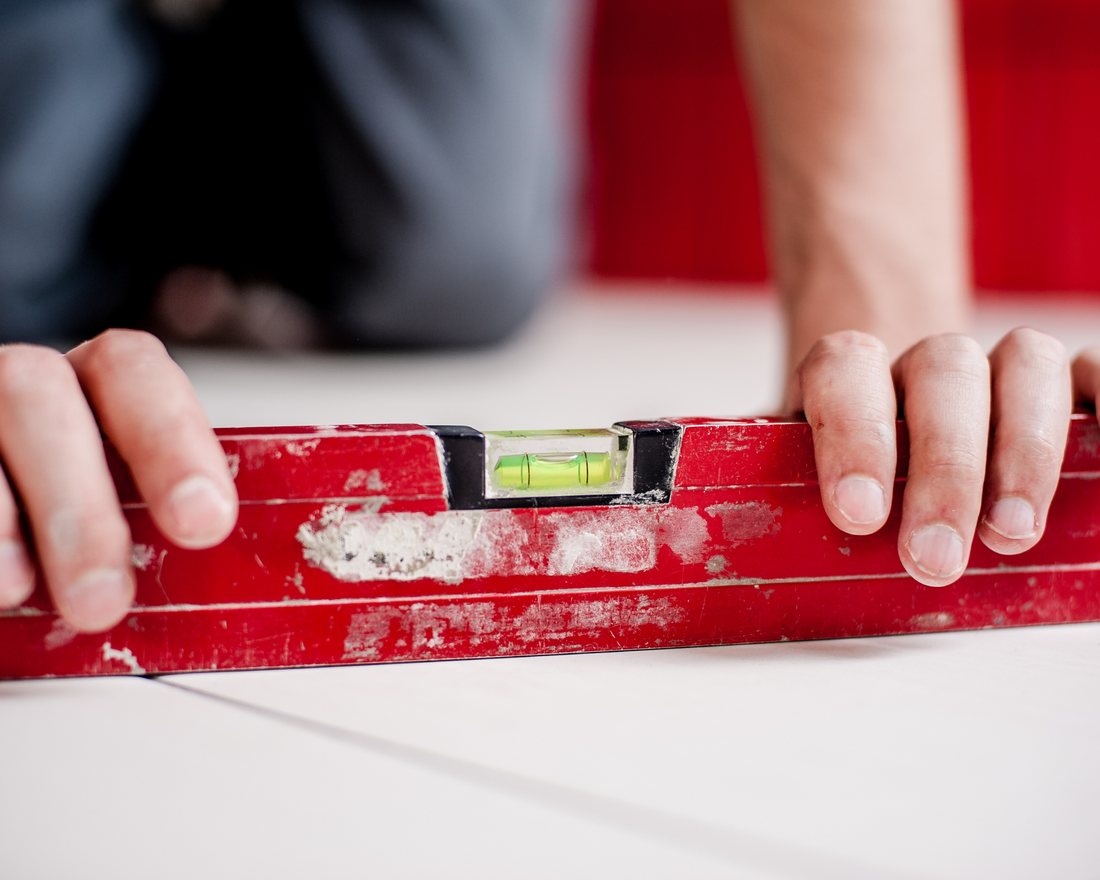
How to Level Uneven Floors for Laminate Installation: A Step-by-Step Guide
Share
Laminate flooring is a beautiful and versatile flooring option, but it requires a smooth and level subfloor for a successful installation. Uneven floors can lead to a variety of problems, including buckling, gaps, and squeaking.
Learn our step-by-step approach on how to level uneven floors for laminate, ensuring a stable and long-lasting installation.
Why is Subfloor Preparation Important for Laminate?
Subfloor preparation for laminate flooring is crucial for several reasons:
Stability
Laminate flooring is a floating floor, meaning it's not directly attached to the subfloor. A level subfloor provides a stable base for the laminate to "float" on, preventing movement and potential damage.
Preventing Damage
Unevenness in the subfloor can cause stress on the laminate planks, leading to buckling, warping, or cracking.
Sound Reduction
A level subfloor minimizes gaps and unevenness, which can contribute to noise transmission.
Aesthetic Appeal
Unevenness in the subfloor can telegraph through the laminate, creating an unsightly and uneven surface.
Assessing Your Subfloor
Before you begin leveling your subfloor, it's crucial to assess the extent of the unevenness. Minor imperfections can often be addressed with a floor leveling compound, while more significant irregularities may require more extensive solutions like grinding or shimming.
Visual Inspection: Look for any obvious dips, bumps, or slopes in the subfloor.
Level: Use a long level to check for unevenness across the entire floor.
Measure the Gaps: Measure any gaps between the level and the subfloor to determine the extent of the unevenness.

How to Level Uneven Floors for Laminate: Methods
Use a Self-Leveling Compound
Ideal for Dips and Low Spots: Self-leveling compound is a pourable mixture that spreads across the floor to create a smooth and level surface. It's ideal for filling in dips, low spots, and minor unevenness.
Application: Prepare the subfloor by cleaning it thoroughly and priming if necessary. Mix the self-leveling compound according to the manufacturer's instructions and pour it onto the floor, using a trowel to spread it evenly. Allow it to dry completely before installing the laminate.
Apply a Plywood Underlayment
For Larger Unevenness: If the subfloor has more significant unevenness or slopes, adding a layer of plywood underlayment can help create a level surface.
Installation: Cut the plywood to fit the room and secure it to the subfloor with screws or nails. Ensure the plywood is level and creates a smooth surface for the laminate.
Use Shims
Fixing Subfloor Dips and Bumps: Shims are thin wedges that can be used to fill in small gaps or raise low spots in the subfloor.
Application: Place shims under the laminate planks in areas where the subfloor is uneven. Ensure the shims are securely in place and don't create any bumps or ridges.
Fixing Subfloor Dips and Bumps: Additional Tips
Sanding
For minor bumps or high spots, sanding the subfloor can help create a more even surface. Using a belt sander or orbital sander, carefully sand down the raised areas until they are level with the surrounding subfloor. This is particularly important for laminate flooring installations, as unevenness in the subfloor can cause the laminate planks to flex and potentially break or become damaged over time.
After sanding, be sure to thoroughly vacuum up any dust and debris to ensure a clean and smooth surface for the underlayment and laminate installation. If you encounter significant unevenness or are unsure about the best approach for subfloor preparation, consult with a professional flooring installer for expert advice.
Grinding
For more significant bumps or uneven concrete subfloors, grinding can be used to level the surface. This process involves using specialized grinding equipment to remove high spots and create a smoother, more even base for flooring installation.
Grinding is particularly effective for addressing larger imperfections or unevenness that cannot be adequately addressed with self-leveling compounds. It's important to note that grinding can create dust, so proper ventilation and dust control measures are necessary. If you're unsure about whether grinding is necessary for your subfloor, consult with a flooring professional for expert advice.
Transform Your Home with Beautiful Laminate Floors from Flooring Attic Today!
Proper subfloor preparation for laminate flooring is essential for a successful and long-lasting installation. By understanding how to level uneven floors for laminate and addressing any dips or bumps in the subfloor, you can ensure a smooth, stable, and beautiful floor that will enhance your home for years to come.
Contact Flooring Attic today to explore our vast selection of laminate flooring options and discuss your flooring needs. As part of Atlanta Flooring Design Centers, a Top 10 Independent Flooring Retailer with 14 locations and over 39 years of experience, we are your trusted source for quality laminate flooring and expert advice. Our knowledgeable team can guide you through the selection process, provide professional installation, and answer any questions you have about subfloor preparation and laminate flooring installation.
